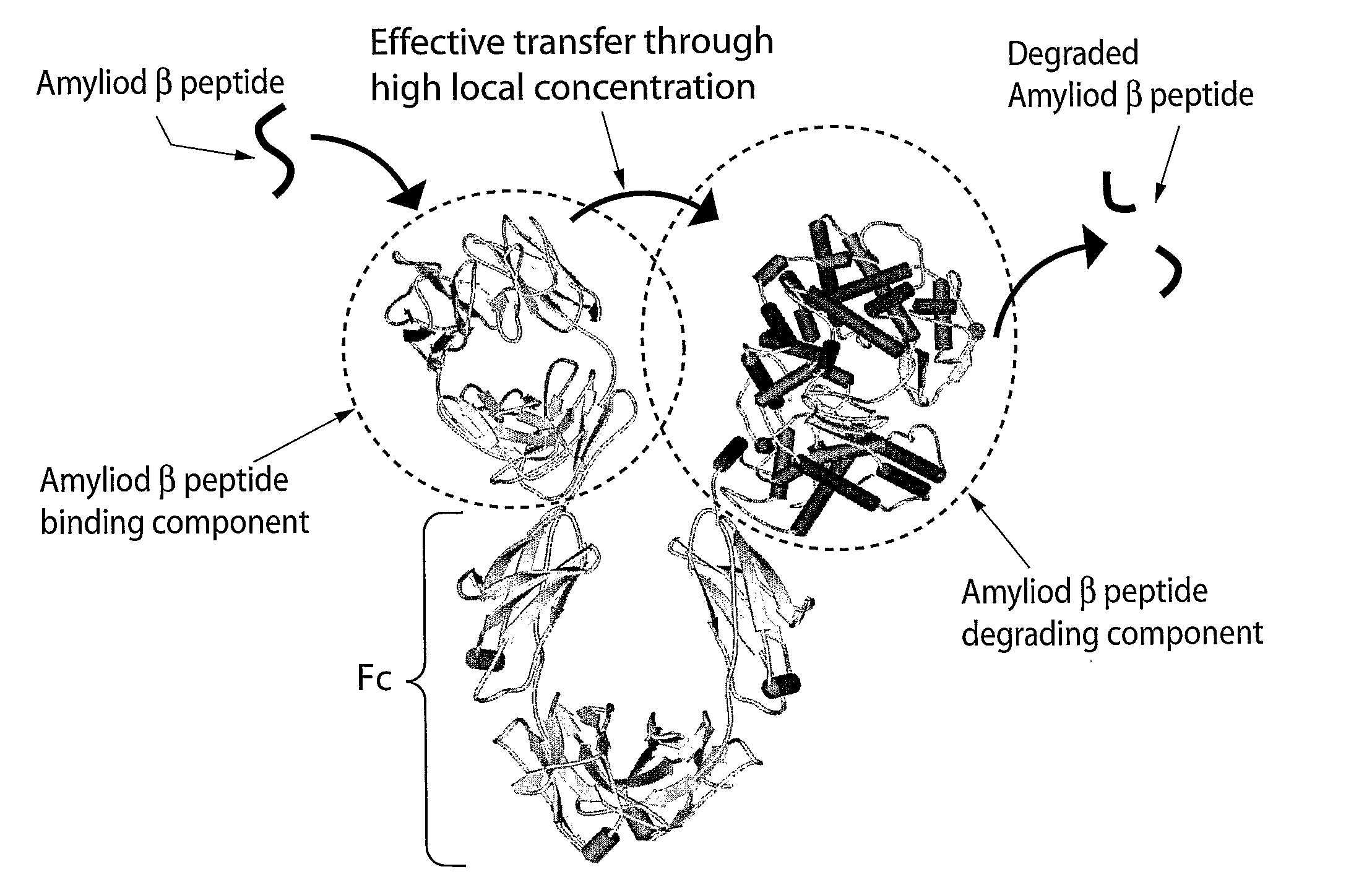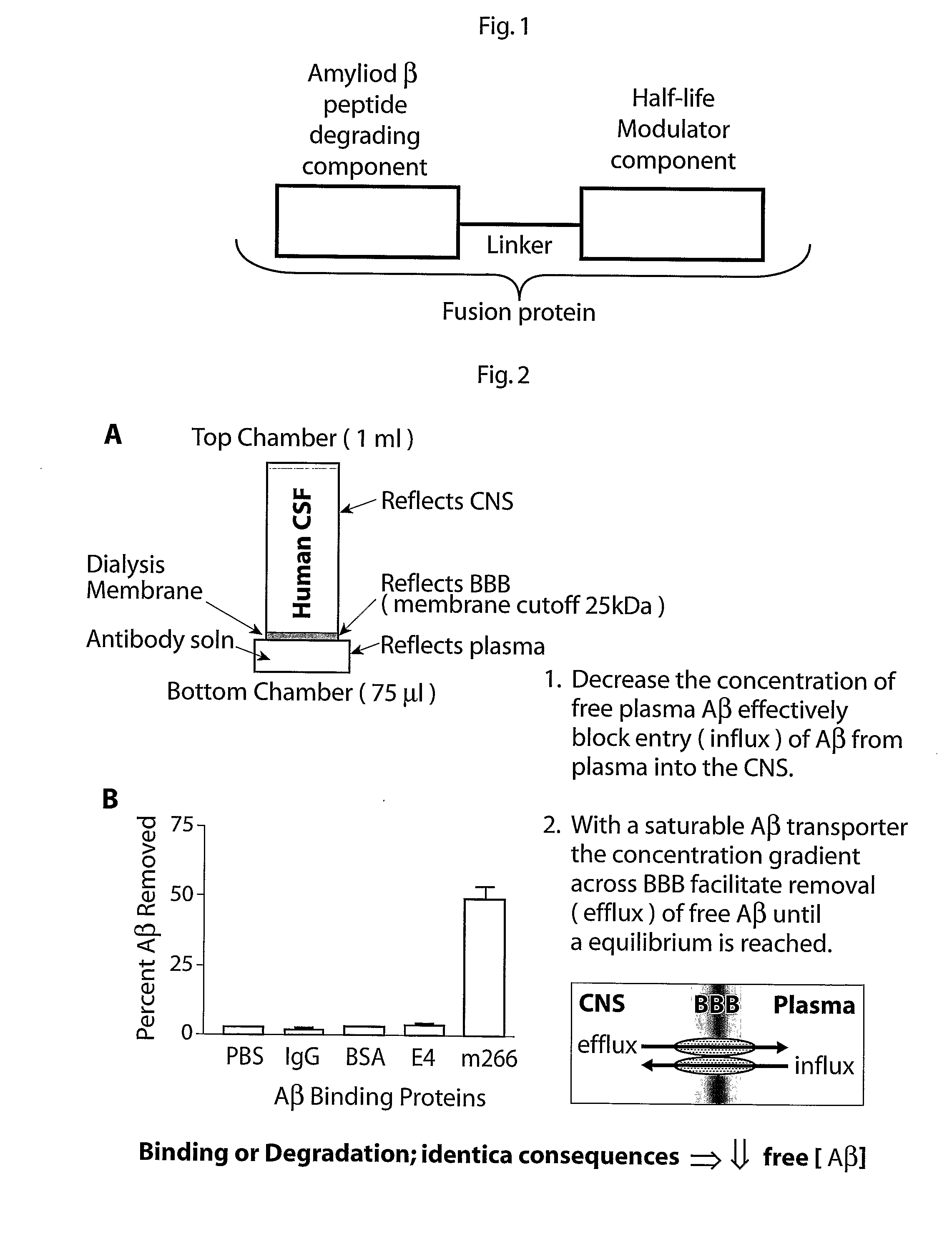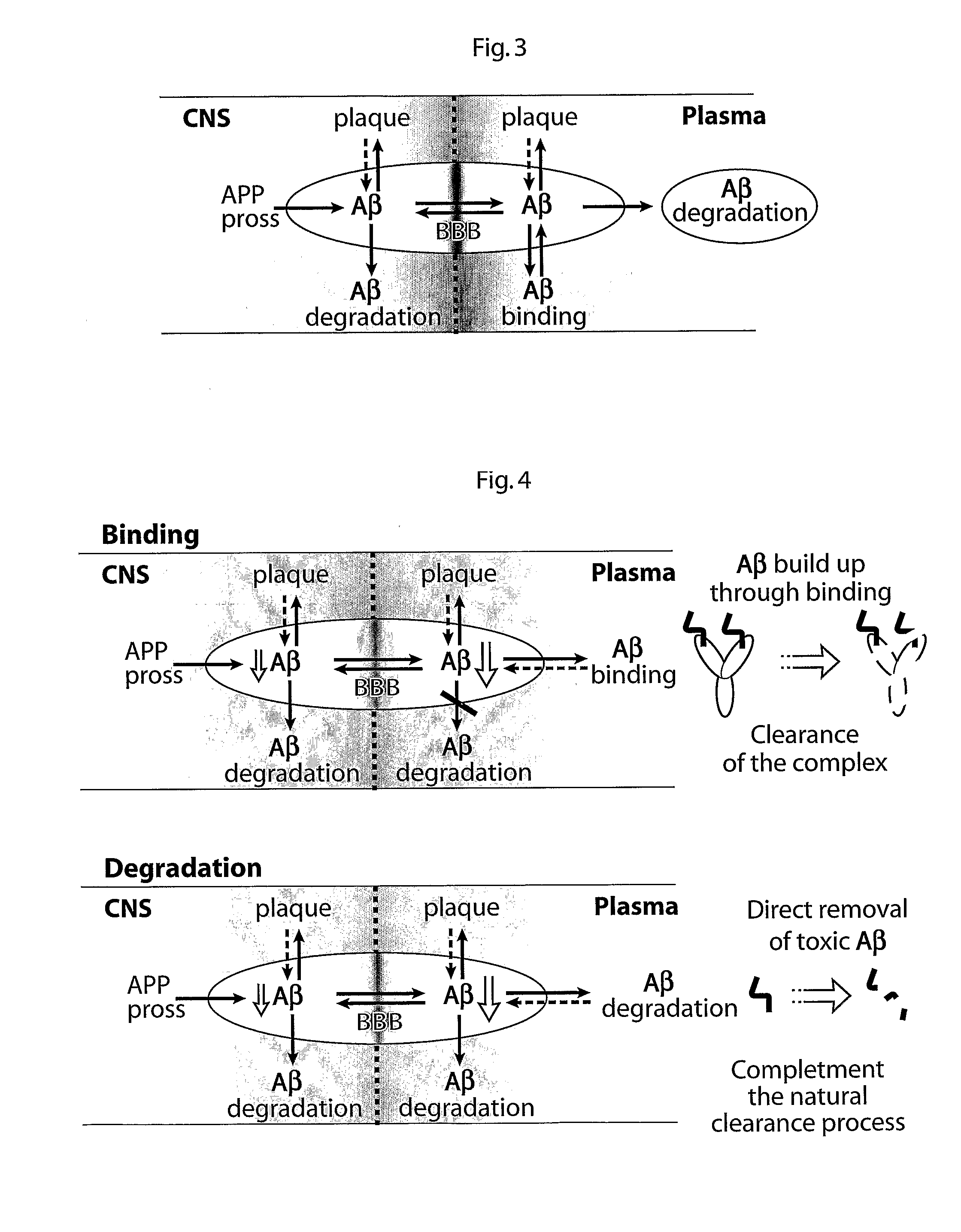Fusion Proteins Having a Modulated Half-Life in Plasma
a plasma and protein technology, applied in the direction of peptides, drug compositions, peptides, etc., can solve the problems of incomplete erosion of higher cognitive function, increased risk of death, so as to achieve the effect of limited effect and activity of fc and overall hydrophilic character
- Summary
- Abstract
- Description
- Claims
- Application Information
AI Technical Summary
Benefits of technology
Problems solved by technology
Method used
Image
Examples
example 1
Fusion Protein Construction
Description of the Protein Domains
[0155]The extra cellular domain of Neprilysin is defined as amino acid 51-749 (excluding the first Methionine) (SEQ ID No 1-4). There are two polymorphisms that lead to amino acid difference identified in this domain, and the amino acid sequence for the different variants are described in SEQ ID no 1-4. The extracellular domain of Neprilysin is fused to the IgG4 Fc domain (including the hinge region). A signal sequence (SEQ ID 5) is introduced to enable secretion of the protein into the culture media during expression. The sequence of the hinge region is shown in SEQ ID 6 and the IgG4 Fc domain is shown in SEQ ID 7. The complete fusion protein (with a human Neprilysin variant corresponding to SEQ ID 1) is described in SEQ ID 8. The final fusion protein (excluding the signal sequence) has a predicted molecular weight of 211 kDa (as a dimer).
Description of the Construction of the Gene Encoding the Fusion Protein
[0156]The gen...
example 2
Expression and Purification the Fc-Neprilysin Protein
[0160]The Nep-Fc fusion protein is transiently expressed in mammalian cells. Several cell lines are used, including HEK293T and HEK293EBNA cells. The expression of the fusion protein is performed in suspension-adapted cells or adherent cell cultures and is investigated using different transfection reagents, different cell densities and different ratio of transfection reagents and plasmid. The activity of the fusion protein is verified in small-scale optimisation experiments. The Nep-Fc is purified directly from the culture supernatants using Protein A affinity chromatography as a primary step. When a second purification step is needed, e.g. ion exchange or gel filtration is used. The final fusion protein is formulated in a buffer suitable for in vivo use (mouse studies) e.g. a buffer including a stabilising agent (e.g. sucrose, salt or detergent). The final purified fusion protein is analysed for concentration (e.g. A280, BCA), id...
example 3
NEP-FC Enzyme Activity
[0161]The recombinant NEP-Fc was evaluated for neprilysin enzymatic activity using a two-step chromogenic assay. In the first reaction glutaryl-Ala-Ala-Phe-4-methoxy-2-naphthylamide is cleaved by neprilysin to Phe-4-methoxy-2-naphthylamide, while in the second step an aminopeptidase is used to generate the fluorescent 4-methoxy-2-naphthylamine. Reaction mixtures in 100 μL volumes containing 100 μM glutaryl-Ala-Ala-Phe-4-methoxynaphthylamide, 50-100 μg membrane fraction, and 20 mM MES buffer were added to a 96 well microtiterplate. Incubations were for 2 hours at 37° C. in a water bath. At the end of the incubation period, the reaction was terminated by the addition of phosphoramidon. Leucine aminopeptidase was added and the mixtures were incubated for an additional 15 minutes. The 4-methoxy-2-naphthylamine was quantified spectrofluorimetrically at an excitation wavelength of 340 nM and an emission wavelength of 425 nM. Free 4-methoxynaphthylamine was used to co...
PUM
 Login to View More
Login to View More Abstract
Description
Claims
Application Information
 Login to View More
Login to View More - R&D
- Intellectual Property
- Life Sciences
- Materials
- Tech Scout
- Unparalleled Data Quality
- Higher Quality Content
- 60% Fewer Hallucinations
Browse by: Latest US Patents, China's latest patents, Technical Efficacy Thesaurus, Application Domain, Technology Topic, Popular Technical Reports.
© 2025 PatSnap. All rights reserved.Legal|Privacy policy|Modern Slavery Act Transparency Statement|Sitemap|About US| Contact US: help@patsnap.com



